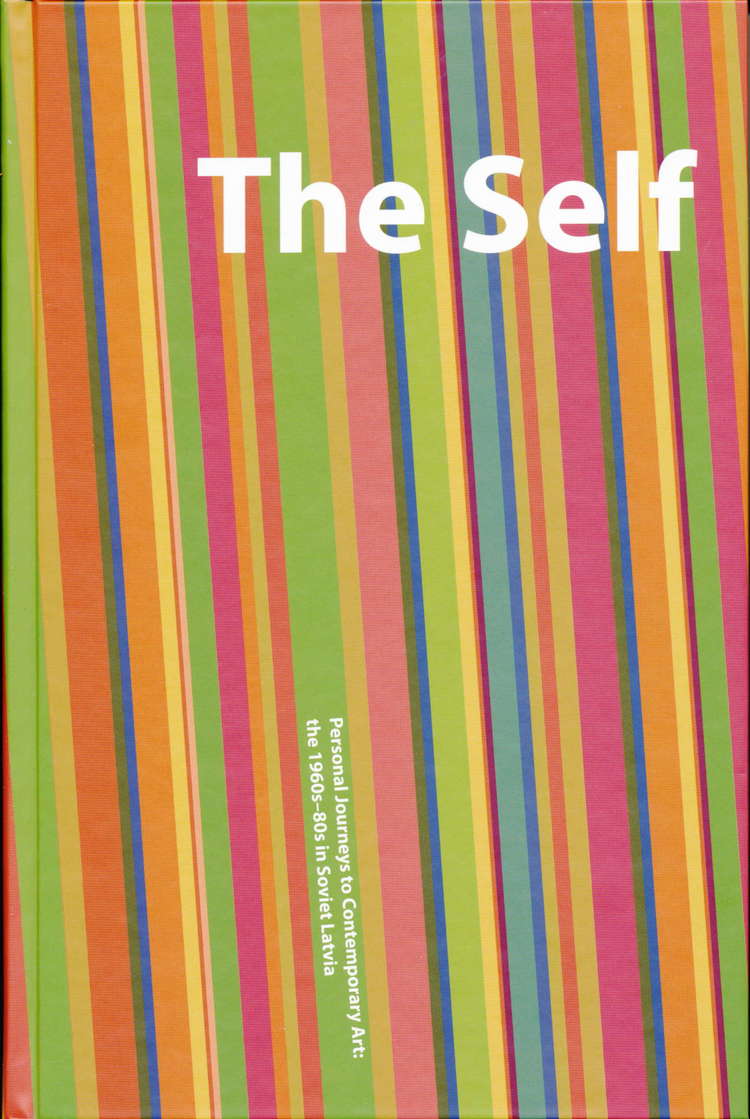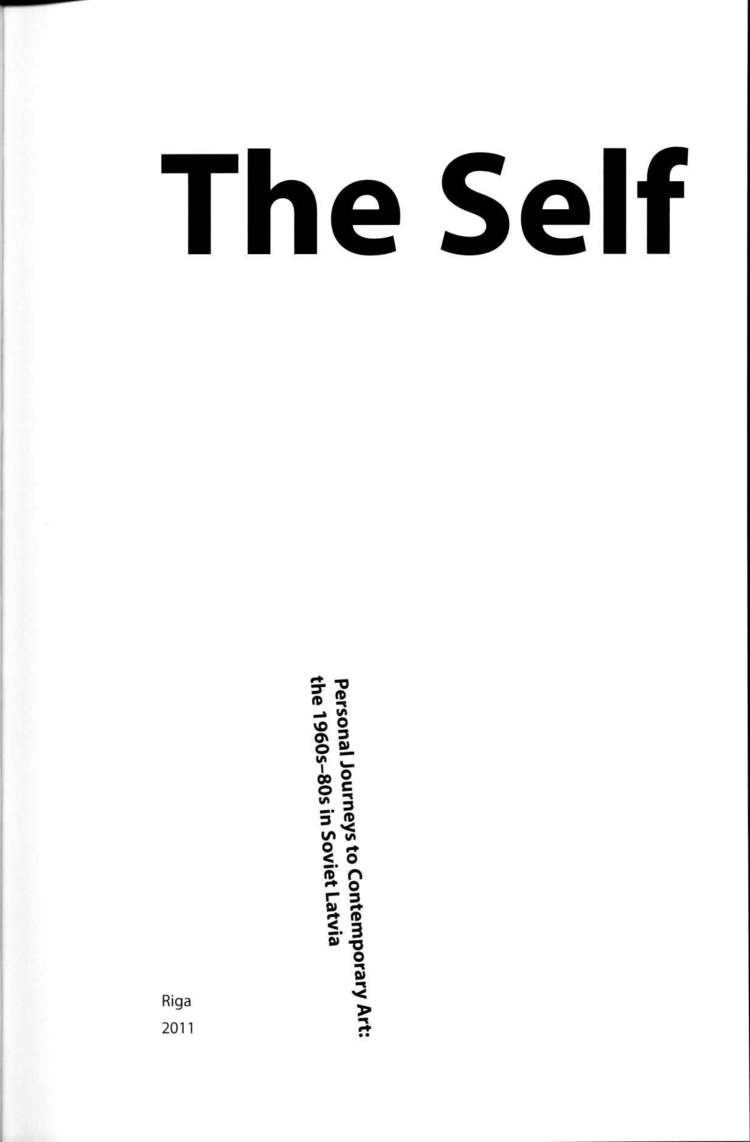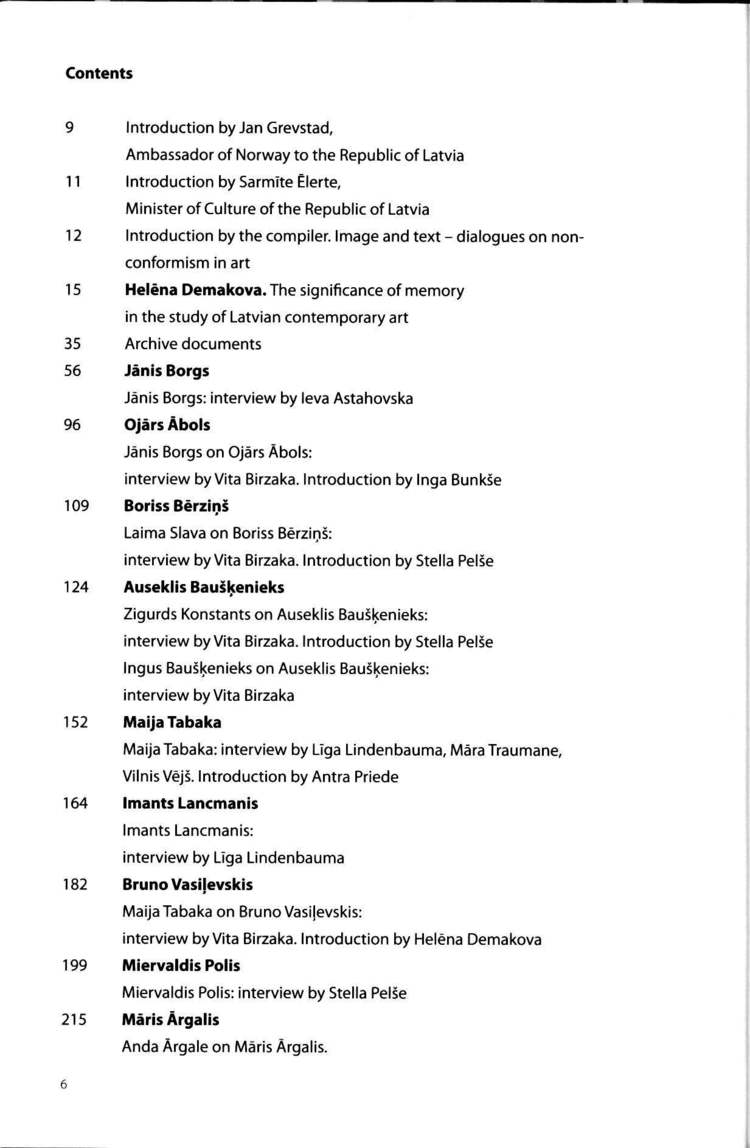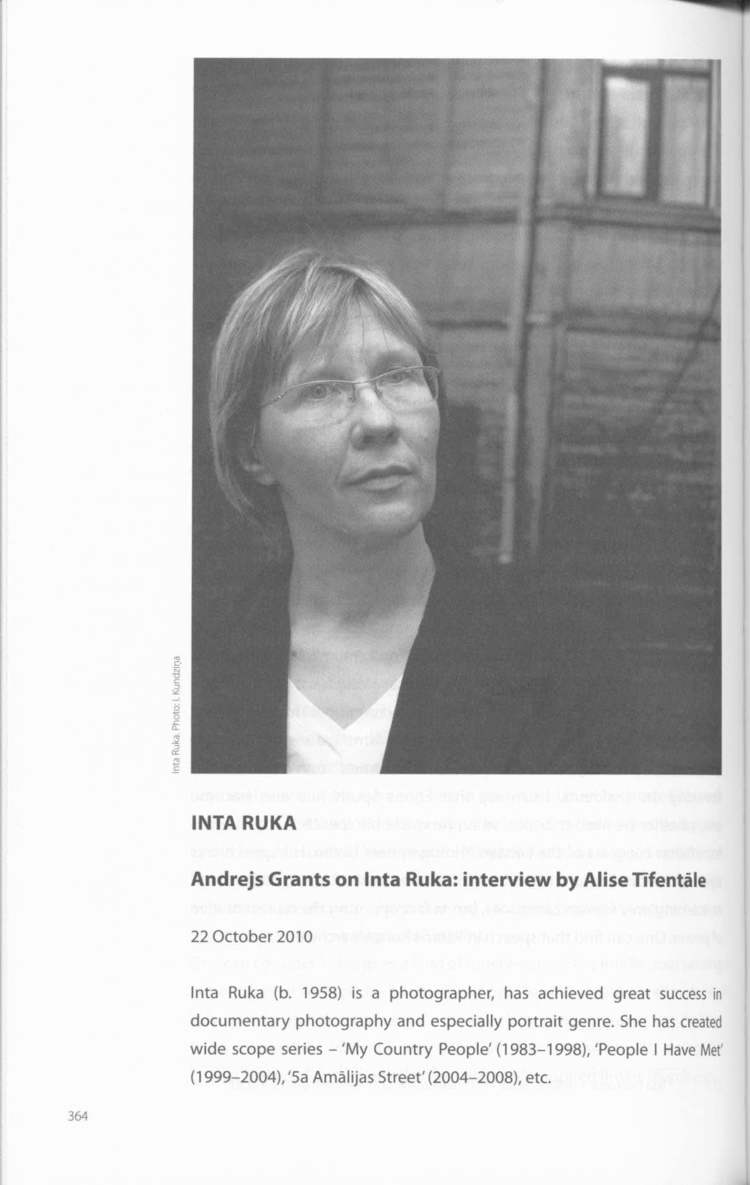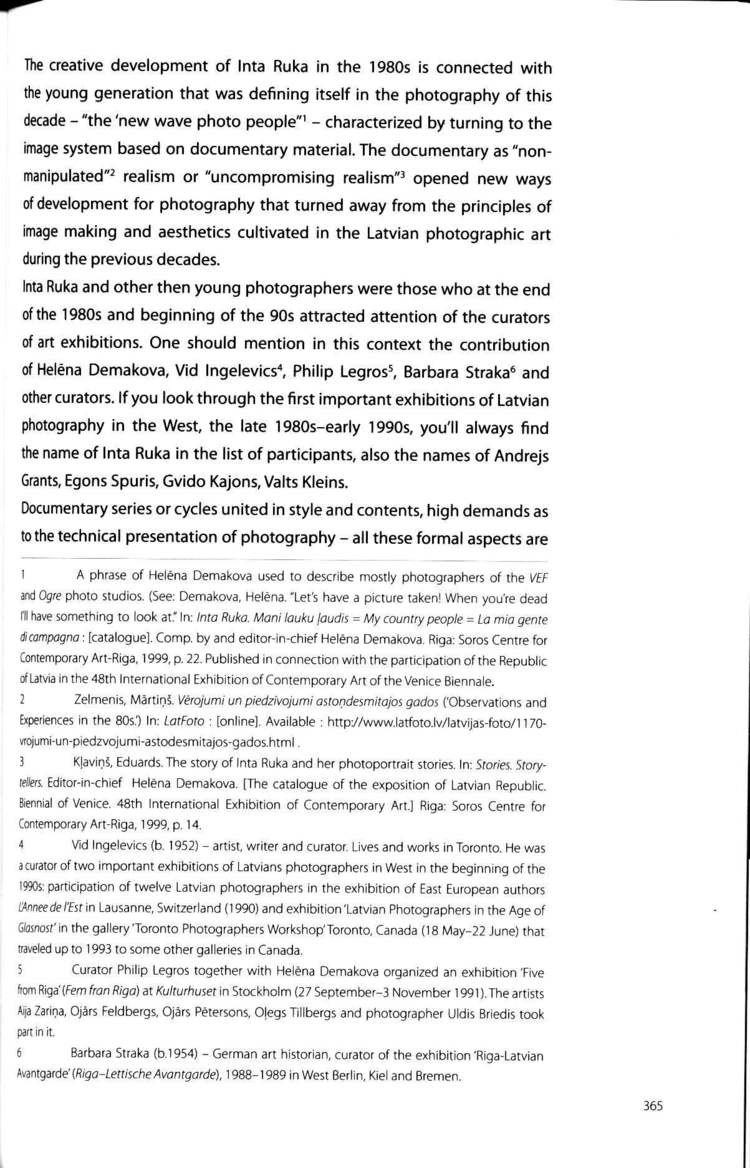“Photographer Inta Ruka. [An interview with photographer Andrejs Grants],” in Helēna Demakova, ed., The Self. Personal Journeys to Contemporary Art: The 1960s–1980s in Soviet Latvia (Riga: Ministry of Culture of the Republic of Latvia, 2011), 364-374. ISBN 9789934801037.
Inta Ruka (b. 1958) is one of the most well-known Latvian photographers who has achieved great success in portraiture. Among her signature series are: My Country People (1983-1998), People I Have Met (1999-2004), and 5a Amalijas Street (2004-2008). The creative development of Ruka in the 1980s is closely related to the young generation that was defining its position in the photography of this decade, “the new wave of photography.” They turned to documentary material. The documentary as “un-manipulated” or “uncompromising” realism for them opened up new avenues for photography that were opposite to the principles of image making and aesthetics cultivated in the Latvian photographic art in the 1960s and 1970s.
Ruka and other then young photographers, including Andrejs Grants, attracted attention of the curators of art exhibitions at the end of the 1980s and beginning of the 1990s, such as Helena Demakova, Vid lngelevics, Philip Legros, Barbara Straka and others. Reviewing the catalogues of the first important exhibitions of Latvian photography in the West in the late l980s and early 1990s, one will always find the name of Ruka in the list of participants, along Andrejs Grants, Egons Spuris, Gvido Kajons, or Valts Kleins.
Grants and Ruka emerged from a milieu connected to The Ogre Camera Club, named after its location - a town not far from Riga. The club was led by photographer Egons Spuris, Ruka’s teacher and husband. Andrejs Grants in this conversation discusses the context and conditions under which the new wave of photography could arise in Latvia and such artists as Ruka develop.
